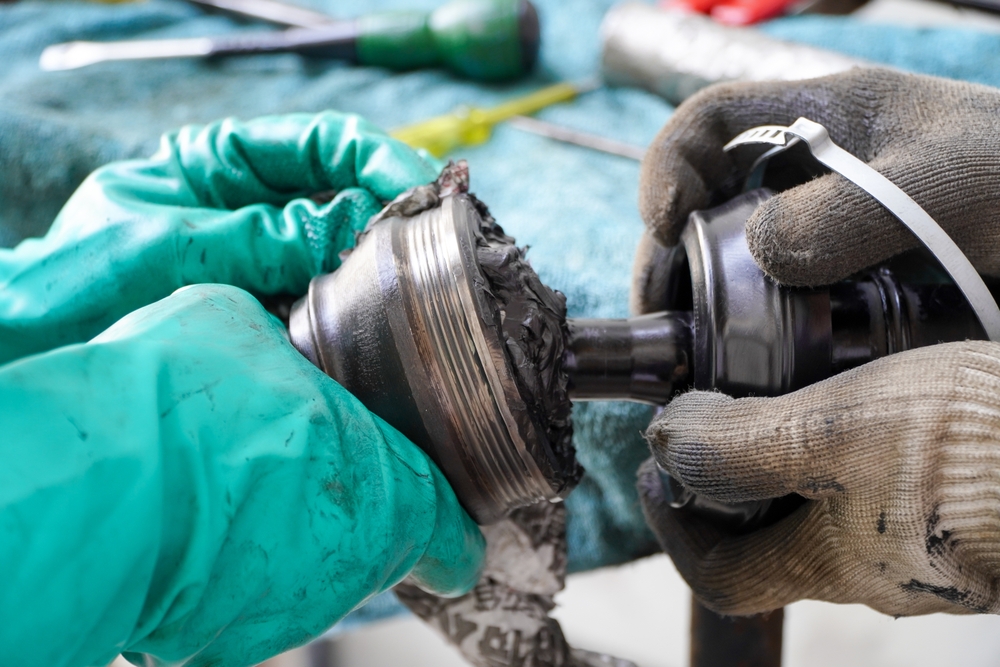CV joints transfer power from transmission to wheels efficiently. Boots protect joints by keeping grease inside constantly. Tears in boots cause grease to leak onto the wheel well. Early detection prevents further joint wear and drivetrain damage. Visual inspection of wheel wells reveals potential CV joint issues quickly. Healthy joints maintain smooth torque transfer during all driving conditions. Understanding grease trails improves vehicle safety and maintenance effectively. Acting promptly avoids costly repairs and sudden joint failure consistently. CV boot condition is critical for reliable driveline operation every day.
Recognizing Grease Splatter
Grease splatter is usually visible near the tire or wheel arch. Torn CV boots allow lubricant to escape under rotational pressure constantly. Leaked grease sticks to suspension, brakes, and wheel components repeatedly. Early recognition helps identify which joint may be failing quickly. Mechanics can trace grease patterns to locate the damaged boot accurately. Replacing damaged boots prevents further contamination and internal wear immediately. Healthy boots keep joints lubricated and reduce vibration or noise during driving. Visual cues often appear before clicking, popping, or clunking develops noticeably. Detecting grease trails prevents sudden CV joint failure and unsafe driving conditions, making timely service from a shop specializing in European Auto Repair in Denver, CO a smart decision.
Outer CV Joint Exposure
Outer CV joints handle angular rotation during steering and turns. Boot damage on outer joints produces visible grease trails easily. Contaminants entering the joint accelerate wear causing eventual clunking or clicking. Timely boot replacement restores lubrication and prevents further component damage. Mechanics inspect outer joints by rotating wheels slowly while observing grease patterns. Healthy outer joints maintain smooth torque transfer and stable steering response. Damaged outer joints increase stress on axles and reduce handling precision. Monitoring outer joint boot condition prevents progressive drivetrain failure consistently. Proper outer joint maintenance ensures safe cornering and low-speed manoeuvring reliability.
Inner CV Joint Indicators
Inner CV joints allow axial movement along the drive shaft. Leaks from inner boots may leave grease on suspension or chassis parts. Lack of lubrication increases friction causing wear and potential joint failure. Mechanics examine axial travel and boot integrity to assess joint condition. Replacing damaged inner boots restores smooth motion and consistent torque transfer. Healthy inner joints absorb suspension movement while transmitting power efficiently. Damaged inner joints increase stress on connected drivetrain components unnecessarily. Monitoring inner joint boots prevents total torque loss and unexpected immobilization. Proper inner joint care preserves driveline efficiency and vehicle safety reliably.
Conclusion
Grease trails indicate a compromised CV joint boot immediately. Outer and inner joints produce leaks that accelerate wear rapidly. Boot damage and lack of lubrication reduce torque transfer and drivability. Early inspection prevents further drivetrain damage and restores smooth operation. Repair or replacement ensures consistent torque delivery and safe vehicle control. Healthy CV joints improve handling, performance, and overall driveline efficiency.


